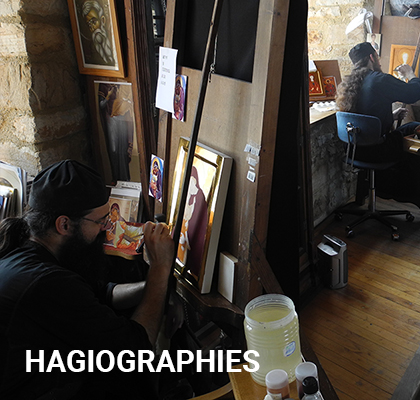Vatopedi monastery
Vatopedi was built on the site of an early Christian settlement dating from Late Antiquity. In 2000, the Ephorate of Byzantine Antiquities excavated the foundations of an early Christian basilica.
to the north of the current katholikon of Vatopedi.[1] Vatopedi was founded in the second half of the 10th century by three monks, Athanasius, Nicholas, and Antonius, from Adrianople, who were disciples of Athanasius the Athonite. By the end of the 15th century, the Russian pilgrim Isaiah wrote that the monastery was Greek. In 1990, Vatopedi was converted from an idiorrhythmic monastery into a cenobitic one. The Monastery of Vatopedi holds the Cincture of the Theotokos, a belt held by some believers to be the actual belt of the Theotokos, which she wore on earth and gave to Thomas the Apostle after her death and during her transition to heaven (the equivalent in the Western Church is the Girdle of Thomas). The silver and jewel-encrusted reliquary containing the skull of St. John Chrysostom is kept in the Monastery and is credited by Eastern Orthodox Christians with miraculous healings. The monastery also contains the Iaspis, a chalice fashioned of a single piece of the precious stone jasper, and numerous icons. Vatopedi’s library preserves a medieval royal charter, the 13th-century Vatopedi Charter of Ivan Asen II of Bulgaria dedicated to the monastery. It was discovered in the monastery’s archives in 1929. The library holds 2,000 manuscripts and 35,000 printed books. Among manuscripts from Vatopedi are Uncial 063, Uncial 0102, and the Vatopedi Psalter in the British Library and the early-14th century Codex Vatopedinus 655[6] divided between the British Library[5] and the French Bibliothèque Nationale,[7] which includes numerous peripluses, extracts from Strabo and Ptolemy’s geographical works, and early maps.
Two large sketes (monastic style communities) are attached to Vatopedi: the Skete of Saint Andrew in Karyes and the Skete of Saint Demetrius near the main monastery. Other kellia (κελλιά; small monasteries which are not independent) are also dependent on the monastery. Some of the kellia in the area of the main monastery compound include










